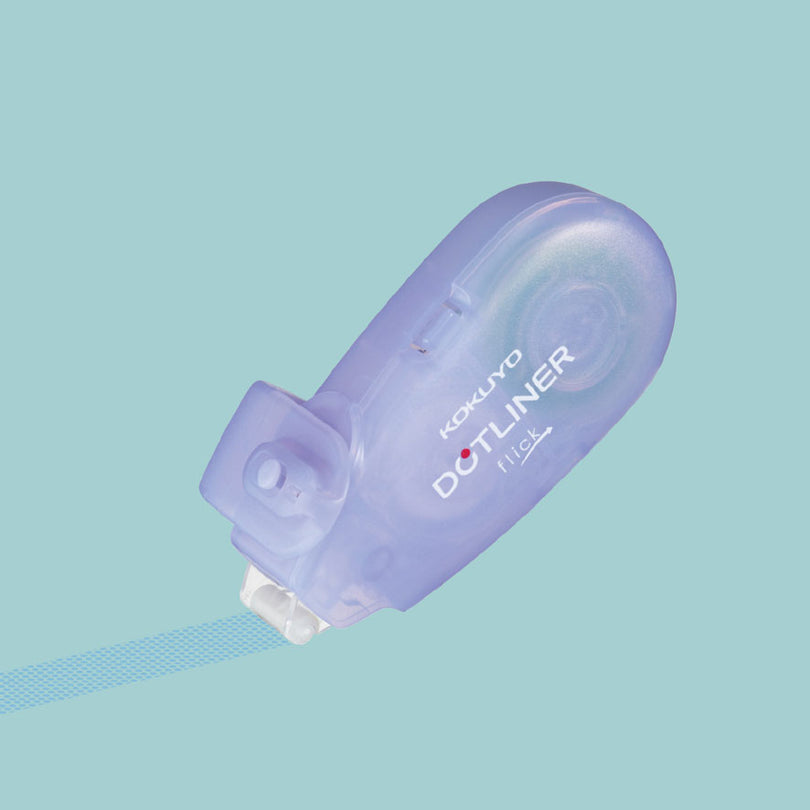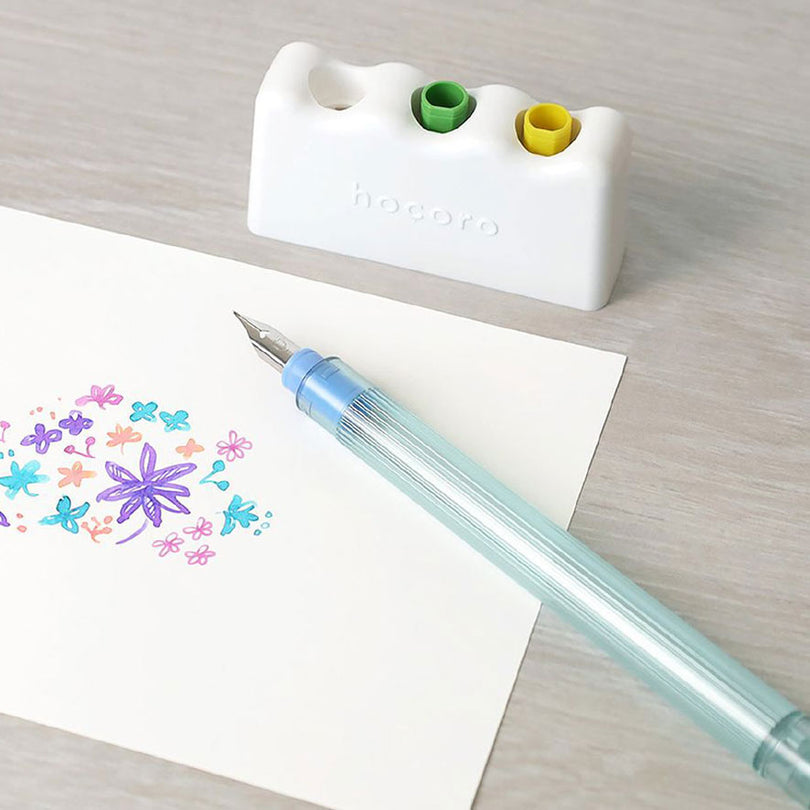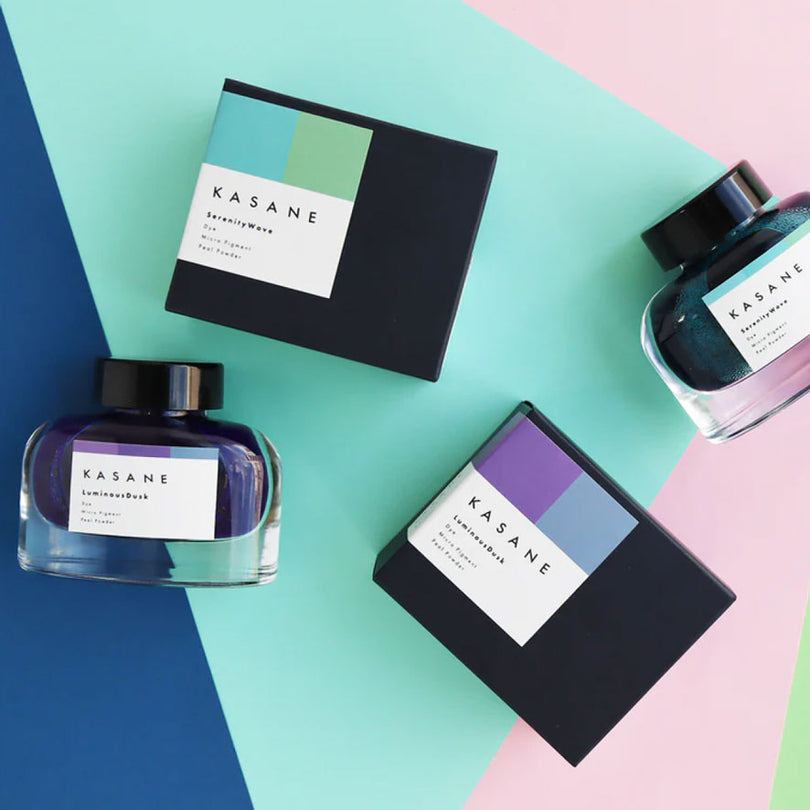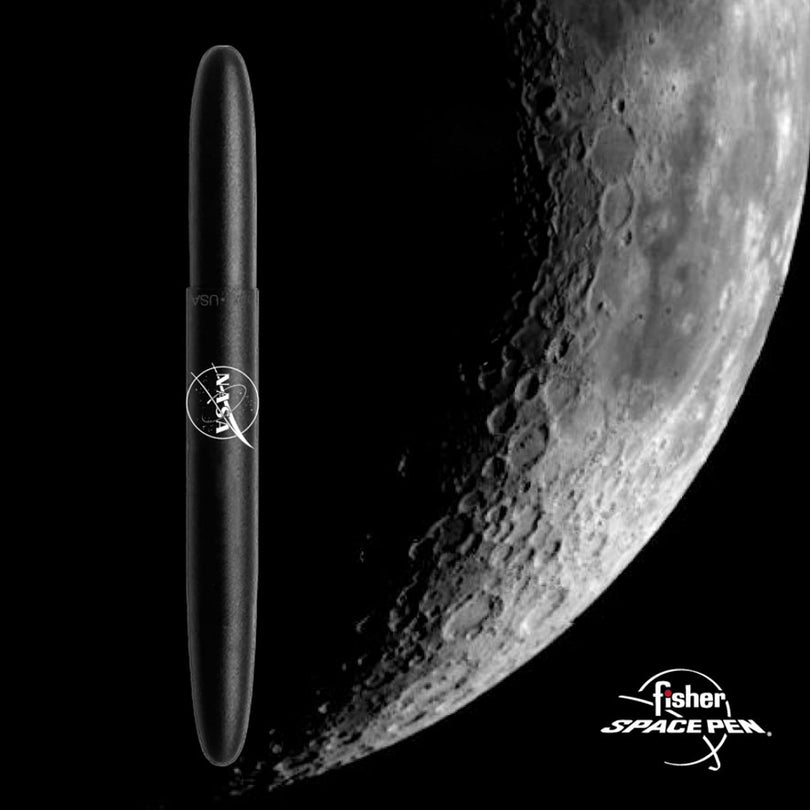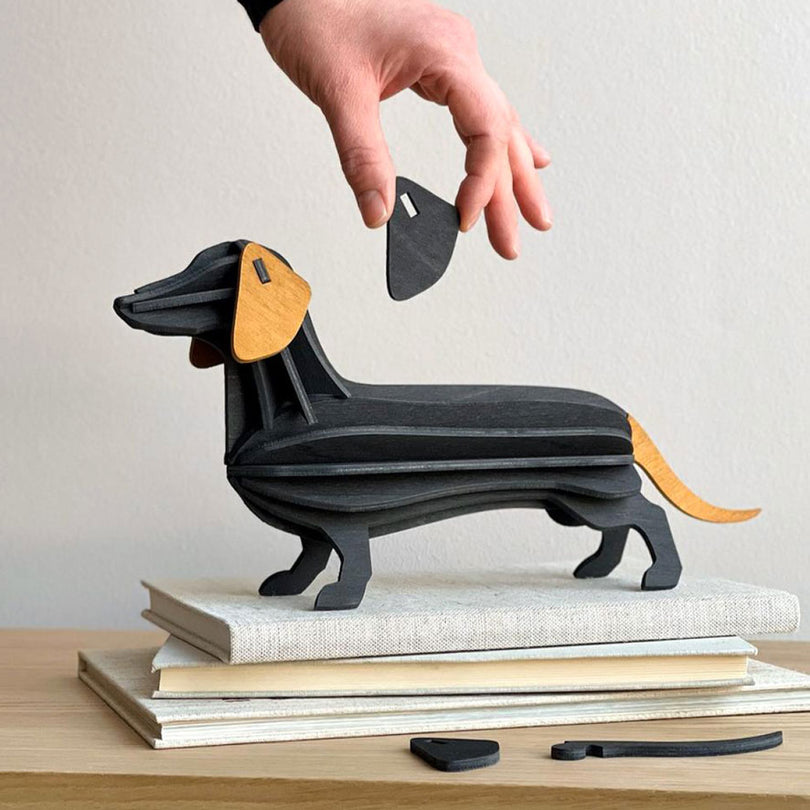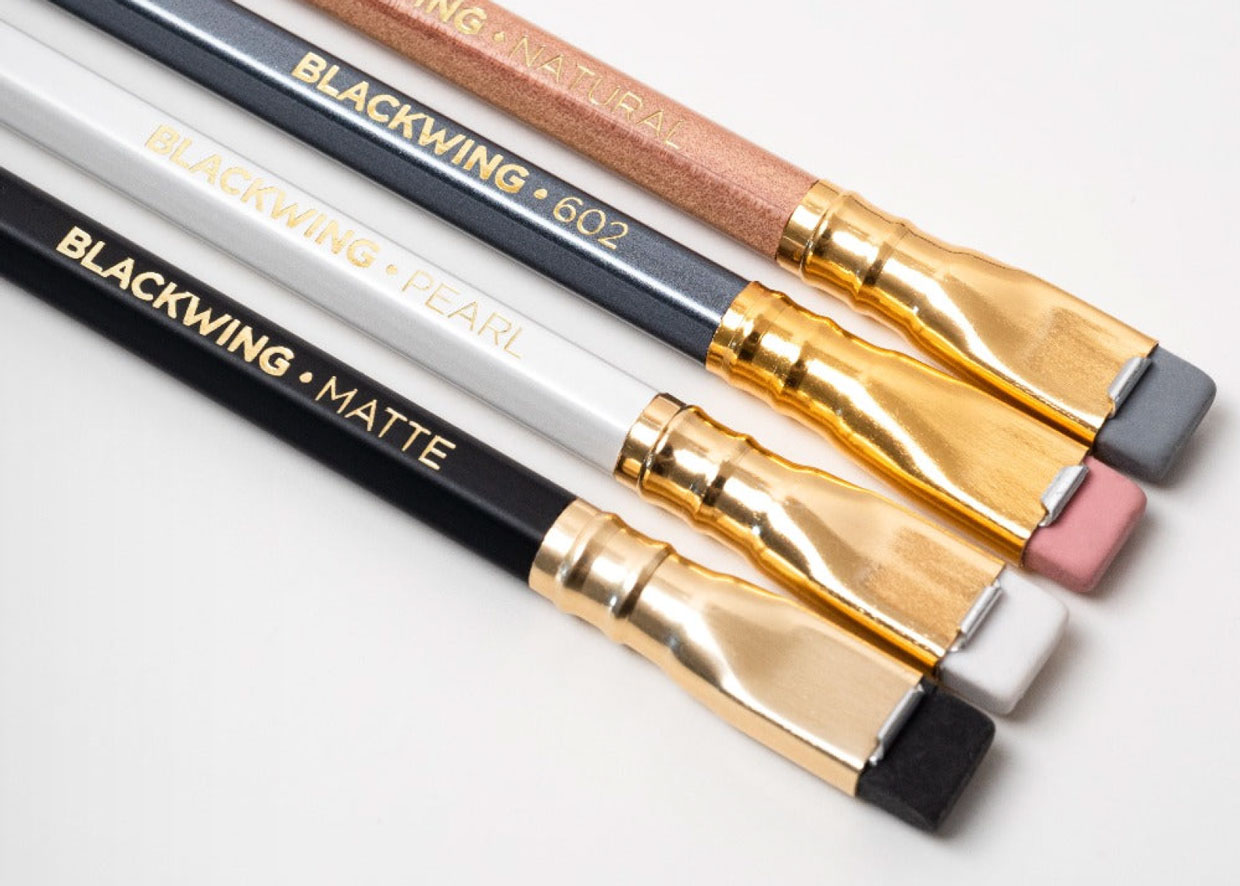With their dedication to Bauhaus-influenced minimalism and functional design, there’s no other pen manufacturer quite like LAMY and we here at Bookbinders Design are very excited to welcome them to our range.
At least to begin with, we have brought in a selection of pens that we feel best represent what makes LAMY special.
We have true classics such as LAMY 2000, CP1 and st, as well as more modern additions like the Studio. The following post will, we hope, serve as a good introduction to LAMY with an overview of their history, manufacturing process, pens and designers.
LAMY: A HISTORY
Founded in 1930 by Carl Josef Lamy, a Parker salesman for the European market, LAMY would begin under a brand now almost completely lost to history - Orthos.
The first pen introduced by C. Josef Lamy was known by the catchy name of the Orthos Zweischreiber, which roughly translates to “Orthos Double Pen” or “Two-Writer”. A novel idea at the time, this fountain pen/ mechanical pencil combo would be a hint of things to come as LAMY would become known for its bold design and innovative spirit.
LAMY would really hit their stride with the introduction of the LAMY 27, which was intended as a direct competitor to the Parker 51 and featured a hooded nibbed and a piston filling system.
Does that sound familiar yet?
The LAMY 27 was a success, in Europe at least, but by the mid-60s three words had begun to design almost all facets of design, from architecture to home appliances: Form Follows Function.
Fountain pens were already at risk of being left behind by modern innovations like László Bíró’s ballpoint pen, so if fountain pens were to survive at all, they would need to make some changes.
Enter Gerd A. Müller, an industrial designer whose designs for German home appliances brand Braun helped define the Minimalist aesthetic of Mid-Century Modern design. Müller was recruited by Manfred Lamy, son of C. Josef Lamy, to design a contemporary fountain pen for modern tastes.
The result was the LAMY 2000, which today remains virtually unchanged in its design and function since its introduction in 1966. It was with this pen that LAMY Design as we know it today, was born.
The LAMY 2000

When first released in 1966, the LAMY 2000 was a vision of the future. With its sleek lines and true devotion to the words “Form Follows Function” there had never been a fountain pen quite like the LAMY 2000 and arguably there has not been since.
Made from a brushed polycarbonate named Makrolon and stainless steel, the classic LAMY 2000 has a matte finish that stealthily disguises any seams in the pen body making it look like one single piece.
As the material ages over time with your use, it will develop a beautiful patina. The grey-black matte finish will eventually turn to an almost glossy piano black.
With its hooded 14k gold nib, the LAMY 2000 could easily be overlooked by non-fountain pen users as just another pen.
It’s about as far from a “traditional” fountain pen like a Montblanc 149 or Parker Duofold that you can get. Its not an outward status symbol of wealth or prestige, instead it is the ultimate functional writing tool.
While the 14k gold nib may not provide any flex, and certainly won’t attract any eyes like more decorative open-air nibs may, the 14k gold’s natural chemical corrosion will help ensure that your LAMY 2000 is writing just as it was the day you bought it five decades later.
Alongside the fountain pen, we’re also very happy to carry the LAMY 2000 Mechanical Pencil, Ballpoint and 4-Pen. Each of the LAMY 2000 variants stand as perfect exemplars of the "Form Follows Function" ethos.
If I were to pick an under-loved LAMY 2000, it would certainly be the 4-pen. With a single knock, the LAMY 2000 multi-pen looks almost identical to its single-coloured ballpoint brother. Using a mechanism patented by German inventor Ulrich Hofmann in 1960, the LAMY 2000 multi-pen operates with the help of gravity. Whichever colour you have facing upwards, is the colour that will emerge once the pen is clicked.
The LAMY CP1

The second pen designed for LAMY by Gerd A. Müller, the LAMY CP1 is known now primarily as one of the slimmest fountain pens on the market. The CP1 or “Cylindrical Pen 1” is the ultimate example of Minimalist design. Originally introduced as a ballpoint pen in 1974, it would later be released in fountain pen form in 1977.
With a stainless steel nib and a cartridge-converter system, the LAMY CP1 is a great entry-point into both LAMY’s premium pen line as well as 20th century German industrial design.
With a matte black barrel and stainless steel spring-loaded clip, the LAMY CP1 certainly shares plenty of DNA with the LAMY 2000, though in a somehow even sleeker form. Even when the cap is posted to the rear of the pen, it is as slim as can be.
A fun little fact too is that the LAMY T10 cartridges were originally conceived for the LAMY CP1 specifically, ensuring that even a pen as slim as the CP1 would still have a generous amount of ink to keep on writing and writing and writing.
The LAMY st

Looking like a prop out of Rainier Werner Fassbinder’s World on a Wire, the LAMY st Tri-Pen is a sleek and distinctly German design. One of the last pens designed for LAMY by Gerd A. Müller, the LAMY st is the single most under appreciated pen that LAMY have ever introduced.
A two-colour ballpoint and mechanical pencil all in one, the LAMY st is the modern day’s answer to the LAMY pen that started it all. Just as the Orthos Zweischreiber was intended to be the one tool to rule them all, you’ll be hard pressed to find a situation where the LAMY st doesn’t sort you out just fine.
A perfect tool for architects, editors, designers and artists, the LAMY st is available in either matte black or a sleek futuristic metallic silver finish.
The LAMY Studio

Designed by Hannes Wettstein, a multi-disciplinary designer who in his far-too-short career designed everything from furniture, wristwatches, buildings and, turns out, fountain pens.
Outside of his work for LAMY, Hannes Wettstein had developed products for optical instrument manufacturer Carl Zeiss, fine watchmaker NOMOS and furniture manufacturer Molteni among many others.
The LAMY Studio is the most recent LAMY pen in our range, having been introduced in 2005, and like the CP1 serves as a great entry-point to the LAMY premium pen line. Over time, the LAMY Studio’s finish will begin to smooth and darken, developing a satisfying patina after years of reliable use.
One easily overlooked yet genius design element to the LAMY Studio is its cap clutch. Situated right up the top of the grip section, just before the nib, is a small lip that allows the cap to click affirmatively into place.
This same lip is duplicated at the dear of the pen, allowing you to post the cap to the end of the pen just as you would when closing it. This ensures that its not friction holding the cap in place, potentially marking your pen’s barrel.
In conclusion
We’ve tried to adhere to LAMY’s functional and minimalist design by bringing you a minimal but highly functional selection of what we think to be LAMY’s greatest designs of the past 50+ years.
These are pens that, like an Eames Lounge Chair and Ottoman, don’t demand you to adhere to their style and aesthetic, but hope to almost disappear into your style, your taste and your life.
Questions? We’d love to hear from you, so don’t be shy! Contact us on Facebook, Instagram or via email at info@bookbindersdesign.com.au


